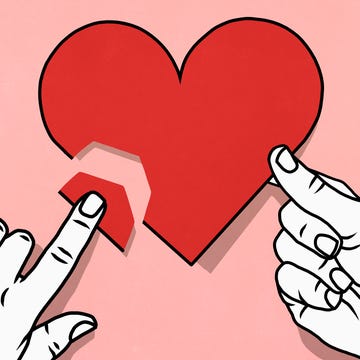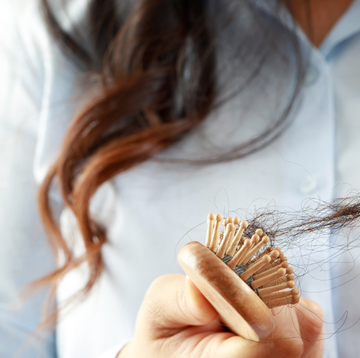Wimbledon is back! And even if you’ve never watched a single tennis match, you’ll be familiar with its traditions: strawberries and cream, all-white outfits, rain delays, Pimm’s and, er, queuing. But behind the famous aesthetic lies a gladiatorial clash of athletes at the pinnacle of their game.
Whether you’re a curious newcomer or a reluctant plus-one at a viewing party, here’s everything you need to know to join in – and even impress – during Wimbledon fortnight. Soon, you’ll be sounding like seasoned Wimbledon aficionado (even if you think a backhand is a type of insult).
A very brief history
Wimbledon is the oldest tennis tournament in the world, dating back to 1877. Held at the All England Lawn Tennis & Croquet Club in London, it’s the crown jewel of the four tennis Grand Slam events (alongside the Australian Open, French Open and US Open).
What to read next
Unlike the others, Wimbledon is still played on grass courts, which makes the ball move faster and rewards quick, attacking players.
At Wimbledon, tradition matters. There is an all-white dress code for players and at Centre Court, you’re likely to spot the Prince and Princess of Wales in the Royal Box, as well as celebrities like Alexa Chung, Sir David Beckham and Julia Roberts.
And, of course, strawberries and cream are served by the bucket-load…
How it all works
The format:
It’s a knockout-style tournament with 128 players in each singles draw (men and women's).
The men play the best of five sets; for women, it’s the best of three. Each set is made up of six games, and the first to six wins a set. Slightly confusingly, you have to win by two games, which means you could win 7-5, unless it’s a tiebreak at 6-6 (but even then, you have to go on to win by two games, so the whole thing could go on for ever…).
When:
It’s held over two weeks at the end of June until mid-July.
The finals weekend (women’s on the Saturday and men’s on the Sunday) is the big spectacle; this year, it’s being held on 12 and 13 July.
Where to watch?
The BBC has full coverage and catch-up.
Who to look out for?
Barbora Krejčíková – World No. 10, last year's Wimbledon Champion.
Krejčíková stunned the tennis world last year with a nerveless performance in one of the most gripping finals in recent memory. Known for her versatility and poise under pressure, she’s as comfortable in singles as she is in doubles (she’s a former world No. 1 in both). Her elegant, all-court game suits grass and now she’s back to defend her crown.
Aryna Sabalenka – World No.3, two-time Australian Open Champion
Sabalenka was forced to withdraw from last year’s tournament with a shoulder injury, but now, she’s fully fit – and dangerous. A powerhouse with one of the most formidable serves in the game, Sabalenka thrives on grass. Her game is made for fast points and big moments. After heartbreak in last year’s US Open final against Coco Gauff, you can expect revenge to be a quiet motivation for this year’s Wimbledon.
Coco Gauff – World No.2, US Open Champion (2023)
Still only 20, Gauff already has two Grand Slams under her belt – and she did it by beating Sabalenka in a gritty US Open final. Her speed, athleticism and charisma have made her the poster child for tennis’s Gen Z era. Though grass is her least comfortable surface (she admits it’s her ‘biggest work in progress’), her trajectory is hard to ignore – and she’s improved her net play significantly.
Iga Świątek – World No.1, five-time Grand Slam Champion
Świątek is arguably the most dominant player of the past three years, but Wimbledon remains her white whale. She exited in the third round in 2024 after losing to Yulia Putintseva, and grass continues to trouble her timing and footwork. Still, champions adapt. If Świątek’s improving slice and serve hold up, she could complete her career Grand Slam.
Emma Raducanu – World No. 82, US Open Champion (2021)
After a meteoric rise and a years-long injury saga, Raducanu is finally back – and perhaps, for the first time, on her own terms. Now 22, the British star is returning to Wimbledon with a rebuilt body, renewed mindset and the quiet steeliness of someone who’s been through the media furnace and come out still swinging.
Carlos Alcaraz – World No. 2, Wimbledon Champion (2024)
At just 22, Alcaraz already has five Grand Slams to his name – including last year’s Wimbledon and this year’s French Open. His five-hour-and-29-minute epic against Jannik Sinner in Paris was one of the greatest finals in tennis history. On grass, his cat-like movement, drop shots and flair make him box-office viewing.
Jannik Sinner – World No. 1, Australian Open Champion (2025)
Cool, clinical, and composed – Sinner is the anti-Alcaraz in style but every bit his equal in firepower. Last year, he reached the Wimbledon quarter-finals, and this year, he’s entering the tournament at the peak of his powers. Sinner’s serve is one of the most reliable on tour, and on grass, that’s golden.
Jack Draper – World No. 4, British No. 1
Draper is the big new hope for British tennis – and unlike some predecessors, he’s built for the big stage. At 6ft 4in, with a rocket serve and a fast-improving net game, he’s well suited to grass. With Andy Murray’s shadow still long, Draper is emerging at just the right moment to inherit the home crowd’s affections.
Novak Djokovic – World No. 5, 34-time Grand Slam Champion
Always a contender, even at 38. But Djokovic enters this year’s Wimbledon with a cloud of doubt hanging over him: a knee injury forced him out of the French Open, and his mobility on grass is still in question. That said, this is Novak – he’s won Wimbledon seven times, and if he’s healthy enough to step on court, he’s a danger to everyone.
Jakub Menšík – World No. 17, The rising star
At just 19,Menšík is a breakout star this season. He made headlines when he beat Djokovic at the Miami Open – a statement win that announced his arrival. Tall, athletic and fearless, Menšík plays aggressive baseline tennis and has a developing serve that could become world-class. He may not win it this year, but he could blow up the draw.
Tennis terms for normal people
Ace – A serve that’s so good the opponent can’t touch it
Break – Winning a game when your opponent is serving
Deuce – When the game is tied at 40-40; you need two straight points to win a game
Love – Zero (15-love means 15-0)
Rally – When both players are just hitting the ball back and forth
Tiebreak – A special game at 6-6 to decide who has won the set; the first to 7 points (by 2)
Seed – A top-ranked player, strategically placed in the drawer
Wild card – A player invited to the tournament even if they didn’t qualify
Grass court – Wimbledon’s surface; it’s slick, fast (and old-school)
Hawk-eye – The replay tech used to challenge line calls; it’s tennis’s version of VAR
How to sound like you know what you’re talking about
Try out a few of these phrases and you might just have someone nodding sagely:
‘Alcaraz has such effortless court coverage – it’s Nadal’s grit with Federer’s flair’
‘The grass really favours serve-and-volleyers, but it’s a dying art, sadly’
‘Iga’s footwork is underrated, especially on a surface that doesn’t suit her natural game’
Or for when you have no idea what’s happening, you could opt for one of these:
‘It’s all about the margins at this level’
‘Grass is such an equaliser, isn’t it?’
‘They’re in a rhythm now – it’ll come down to mental strength’
If all else fails, you can always keep these fun facts up your sleeve:
675 matches will be played on 19 different courts over the 14 days of the Championships.
200,000 punnets of strawberries are sold each year.
50,000 plants are supplied each year.
55,000 yellow balls (used for the first time in 1986) are used during The Championships.
50.2 million streams on BBC iPlayer and BBC Sport Online last year.
Fastest serves: 148mph Taylor Dent; 129mph Venus Williams – both USA.























